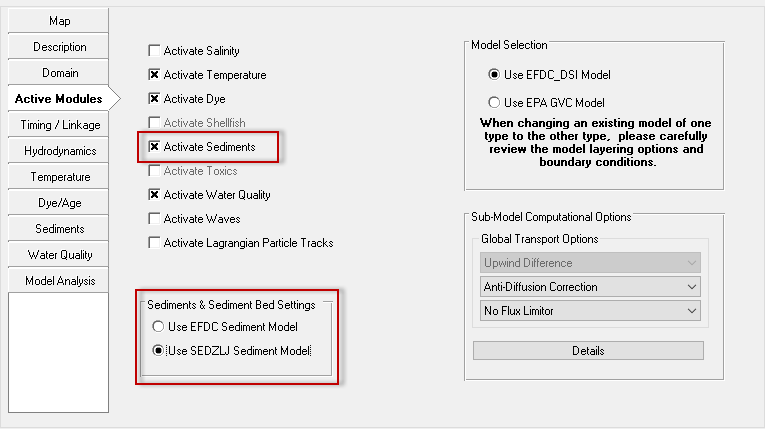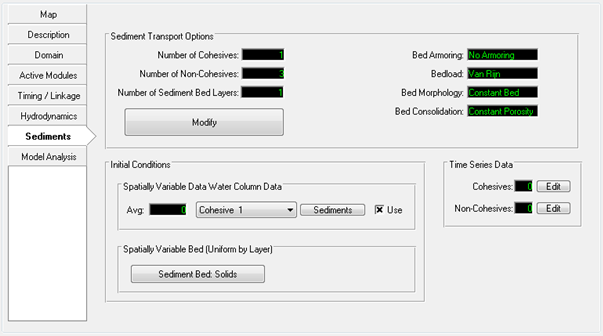Sediments Tab
There are two separate sediment transport sediment sub-models implemented in EFDC. The first sub-model is original EFDC code, which is capable of simulating the transport and fate of multiple size classes of cohesive and non-cohesive suspended sediment including bed deposition and resuspension. A second sediment transport sub-model for EFDC is the SEDZLJ module that uses Sedflume data to determine erosion rates has been developed by Sandia National Laboratories. These two options for sediment are selected for in the Active Modules tab where the user can select either the Use EFDC Sediment Model or the Use the SEDZLJ Sediment Model option as shown in Sediments Tab#Figure 1.
If the user has selected EFDC Sediment Model then the Active Cohesive Sediments or the Activate Non-Cohesive Sediments checkboxes in the Active Modules tab the Sediments tab will be displayed. If the user has selected the SEDZLJ sediment model the just the Activate Sediments checkbox is displayed as shown in Sediments Tab#Figure 1.
Once the sediment model has been turned on the Sediment tab is available as shown in Figure 2. What is displayed here will vary depending the sediment model selected.
Figure 1. Active Modules Tab - Sediment sub-model options.
Figure 2. Sediments Tab for EFDC Sediment Model.

